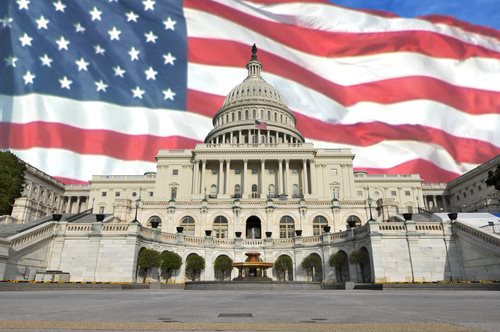
A Guide to Immigration Legislation History of America
Immigration has always been a part of America’s history, with people from across the globe coming to the United States in search of a better life. However, this journey has never been easy, and the laws surrounding immigration have been constantly changing.
In this guide, we will delve deeper into the history of immigration legislation in America, from the early years of the Founding Fathers, through to the Trump administration’s immigration policies.
Founding Fathers and First Immigration Laws
The Founding Fathers recognized early on that America was a land of immigrants and included the right to immigrate in the Constitution. They believed immigration was essential to the country’s growth and prosperity.
The first immigration law passed by Congress in 1790 allowed any free white person who had lived in the United States for at least two years to become a naturalized citizen. However, the law only applied to those who were white, as Congress did not consider other races worthy of citizenship.
Immigration in the 1800s
The 1800s saw a significant increase in immigration to America. The Gold Rush in California, industrialization, and the promise of a better life for many Europeans encouraged thousands to make the journey across the Atlantic.
In 1849, the first significant immigration legislation was passed, known as the “Fearful Irish” bill. Irish immigrants were blamed for crime waves, poverty, and high unemployment. The bill required passengers to make a declaration of intentions and pay a landing fee.
In 1882, the Chinese Exclusion Act was passed. The law prohibited Chinese laborers from entering the United States, and those that were already living in the country were prohibited from becoming citizens. It was the first immigration law to limit a particular nationality and went on to have a significant impact on the Chinese-American community.
Immigration in the 1900s
The early 1900s brought an influx of immigrants to America, with many arriving from Southern and Eastern Europe. The Immigrant Act of 1917 established literacy requirements for immigrants to become naturalized citizens, and a maximum quota was imposed for each nationality, favoring those from Northern Europe.
The Immigration Act of 1924 went even further, establishing a strict quota system based on nationality. It was the first law in America to set quotas based on nationality and resulted in a significant decrease in immigration from Southern and Eastern Europe.
The 1960s saw a significant shift in immigration legislation. The Immigration and Nationality Act of 1965 abolished the quota system and was the first law to consider immigrants’ skills and family relationships as significant factors in determining their eligibility for citizenship.
Immigration in the 21st Century
The new century brought new challenges for America’s immigration system. The September 11, 2001, terrorist attacks triggered a new wave of anti-immigration sentiment, and the government responded with tighter border control and immigration policies.
In 2002, the Homeland Security Act established the Department of Homeland Security, which consolidated many of the country’s immigration-related agencies, including the Immigration and Naturalization Service (INS).
The Immigration Reform and Control Act was passed in 1986, legalizing many undocumented immigrants already living in the United States. However, the law failed to address the root causes of illegal immigration and did not provide a path to citizenship for most undocumented immigrants.
In 2012, President Obama granted temporary relief from deportation to undocumented immigrants through the Deferred Action for Childhood Arrivals (DACA) program. However, DACA was later rescinded by the Trump administration, which took a harsher stance on illegal immigration.
President Trump’s Immigration Policies
President Trump’s administration put forward several significant changes to the U.S. immigration system. One of the most controversial was the “Zero Tolerance” policy, which resulted in the separation of thousands of families at the border and the detention of children.
In 2019, President Trump declared a national emergency to redirect funding to build a wall on the U.S.-Mexico border. The wall was a cornerstone of Trump’s campaign and immigration policy, but many criticized its design as a waste of resources and ineffective.
The Biden Administration’s Immigration Policies
The Biden administration has made several moves to reverse Trump’s immigration policies. In his first week in office, President Biden repealed the travel ban that targeted several Muslim-majority countries.
In February 2021, the administration introduced new immigration reform legislation that proposed an eight-year path to citizenship for millions of undocumented immigrants. The legislation also provided increased protection for Dreamers and farmworkers.
Conclusion
America’s immigration system has a long and complex history, with the laws surrounding immigration continually evolving to reflect the changing times. From the first immigration law of 1790 to the Trump administration’s controversial Zero Tolerance policy, immigration remains a contentious issue in American politics.
As the country moves forward, it will be essential to balance the needs of immigrants and the concerns of American citizens, constructing a system that is fair, just, and welcoming to those who seek a better life.
Prior to World War II, the American nation strictly followed previous quota laws with little indication to extraneous situations. One example of the predilection towards quotas regardless of international pressure, came in the 1930’s when American policy-makers refused to address the number of refugees fleeing from a Nazi-controlled Germany. Many prominent members of the Jewish religion, in addition to modern historians and scholars, continue to criticize this blatant disregard for the importance of human life.
Following the destruction of World War II, the need for actual refugee law became unavoidable. The conditions in Europe and around the world illustrated a social and political imperative for America to assist in this ever-growing refugee effort. Even though America came to pass the displaced persons acts of 1948 and 1950, the nation was still late to address the burgeoning need for rapid assistance due to the rebuilding efforts of a war-torn world. Upon passage, there remained much to be desired in terms of refugee policy and this would be addressed thoroughly in subsequent years.
Immigration and Nationality Act of 1952
Some pieces of legislation that directly concern themselves with American immigration law have been altogether nullified by revisions to domestic immigration policy, and in some cases, rightfully so. The Naturalization Act of 1790, which basically set the proverbial bar for immigration and naturalization in this country, could not have survived untouched up to today by restricting rights of citizenship to whites, as it is so overtly discriminatory to non-European immigrant groups and immigration to America nowadays is dominated by emigrations from the Americas and Asia. Other legislative measures, though still colored by anti-immigration sentiments expressed toward specific populations, nonetheless has more resonance in this day and age.
The Immigration and Nationality Act of 1952, or McCarran-Walter Act, did have its notable drawbacks and detractors, based on its retention of national origins quotas that came to pass with immigration acts of the 1920’s, even when European civilians were applying for refuge in large numbers following World War II.
Still, it was at least a partial influence on the current preference-based system of accepting visa/green card applications in its three-part immigration classification scheme. Restrictions on race and gender were also lifted, ending the decades of repression levied upon Chinese immigrants and other Asian immigrant groups.
Furthermore, the five-year wait for permanent residents to naturalize was also ironed out with the McCarran-Walter Act. While the amendments of the 1960’s made the Act more reminiscent of current statutes, the 1952 INA is still regarded as the bedrock of American immigration law.
Refugee-Escapee Act of 1957 & 1960 Fair Share Refugee Act
The 1951 United Nations Convention Relating to the status of refugees set the international standard for the induction of refugees into a country’s populace. The domestic standard for refugees, at least in terms of a legal distinction and yearly ceiling, was established as a result of the Immigration and Nationality Act of 1952, which as noted elsewhere, was hotly contested for its adherence to nationality-based quotas associated with keeping southern and eastern Europeans out of the country in spite of the notion they posed no apparent threat to America.
The Refugee Relief Act of 1953, passed by the United States congress, would partially assuage the needs of refugees from civil unrest/international conflict in Israel and Palestine as well as the ever-increasing issue of those inhabitants of Soviet republics fleeing the shackles of Communism.
With the outpouring of political refugees from Hungary after the brief rise and fall of the spontaneous Hungarian Revolution of 1956, the need to modify American immigration policy on more inclusive terms was evident.
The Hungarian freedom fighters’ very public struggle against Communism and the Soviets’ perceived insensitivity about handling the situation after the Revolution were obviously a source of inspiration to later internal anti-Soviet reform movements as well as numerous factions within America (e.g. disenfranchised African-Americans). The U.S. federal government was clearly inspired too, as it passed two refugee acts in the next few years that allowed for refugee admissions on the basis of executive parole.
The Refugee-Escapee Act of 1957 was a non-quota conduit for escapees from Communist territories, and the Fair Share Act of 1960 further addressed the refugee numbers of Hungary and those still living in DP camps after World War II.
Immigration and Nationality Act of 1965
While the Immigration and Nationality Act of 1952, a.k.a. the McCarran-Walter Act based on its primary sponsors was by no means a step backwards for the United States a whole, it did fall short of the expectations of many (notably President Truman, who vetoed it) in that it held onto the national origins quotas first provided for in 1920’s-era legislation. By virtue of the amendments made to domestic immigration policy in the 1960’s, America did take leaps and bounds forward for bringing itself closer to its self-identification as a promoter of universal rights and equality of all men.
Most significant of all these changes was the very abolition of national origins ceilings based on fractions of the entire pool of permanent residents in the United States. In their stead arose impositions of annual 20,000-person maximums for applicants from the United States from individual nations, which were still very much improvements on the setup of their predecessors.
Yet the effects of the 1965 INA were felt far beyond modifications made to immigration based on absolute numbers. In fact, some of the biggest influxes of immigrant groups came as a result of the removal of numerical limits on certain classes of prospective immigrants, notably those unmarried children of immigrants and other immediate relatives and others who possess some “exceptional ability” of certain use to the American workforce.
At the same time, Ted Kennedy and other supporters of these revisions (before they were passed into law) maintained that the new policies would not radically alter the face of the country, and to some extent, the verbiage of the Hart-Celler Act reflected this; the law specified that alien workers should not take the opportunities of American applicants.
Just the same, the freedom of foreign relatives from quota constraints via the insistence of said policymakers on the preservation of family would dramatically shape shifts in immigration trends to America. Latin American, Asian and African presences in the United States skyrocketed in the wake of the 1960’s version of the Immigration and Nationality Act, and it was only legislation like this that made watershed events such as Barack Obama becoming the first African-American president of the U.S. possible.
Immigration and Nationality Act Amendments of 1981
Essentially, the 1981 amendments to the Immigration and Nationality Act of 1965 took the optimism and free-wheeling spirit of opening the doors to the United States of America wider and focused them in a more practical way, hammering down some of the specifics that were realistically neglected by the Hart-Celler Act and even that of the 1952 version of the legislation.
Perhaps most crucially, the provisions of the 1981 INA addressed abuses of the system that are inherent in America’s approach to allowing migrants to become part of the overall U.S. population, paying greater attention to the details of deportation and the smuggling of illegal immigrants to the country (the federal government was even afforded privileges to seize vehicles of permanent residents with probable cause to suspect their use in facilitating unlawful entry).
As one might expect, there were other facets of the 1981 INA amendments that did not involve the trappings of deportation law. Among these revisions were the elimination of a policy that required foreign residents to reassert the details of their residence, changes made to re-entry visa parameters and new paths to temporary residency for students and physicians alike.
Nonetheless, the 1981’s most lasting applications to American immigration policy would seem to favor the issue of deportation. Much in the way prior U.N. resolutions defined refugees on the basis of their country of origin, the INA amendments declared of deportees that 1) they should be returned to their country of origin/country of last residence, 2) if the country will not accept them, that the Attorney General should process their case, and 3) that the cost of any fines related to their removal be handled by a district customs director.
While these invocations of deportation law were arguably minor at the time, they did serve to re-address concerns previously left to the turn of the 19th century, and would come to have larger application to the growing issue of illegal immigration in subsequent decades.























